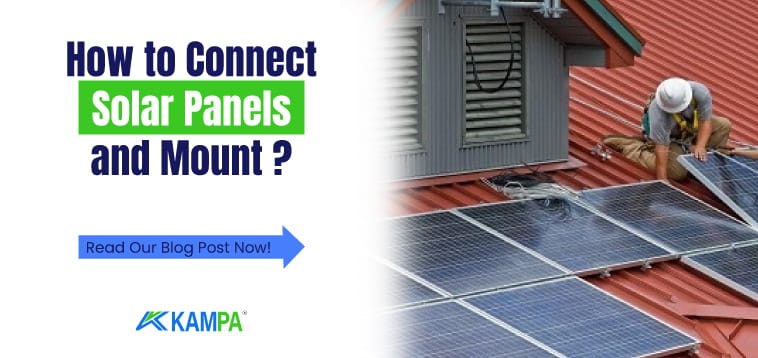How to Connect Solar Panels, Mount ? 1. Bester Content Practical
The solar panel installation connect solar panels system is crucial for its efficient and safe operation. Click for performance-enhancing information.
In this article, how to install the solar panel connection, what should be considered? You will find answers to questions such as which materials should be used.
Table of Contents
We will also share the problems and solutions you may encounter while installing solar panel connection. You don’t need professional help to install a solar panel connection.
With just a little time, patience and the right knowledge, you can build your own solar energy system. Continue reading our article and learn how to install a solar panel connection. Start now and take advantage of the benefits of solar energy!
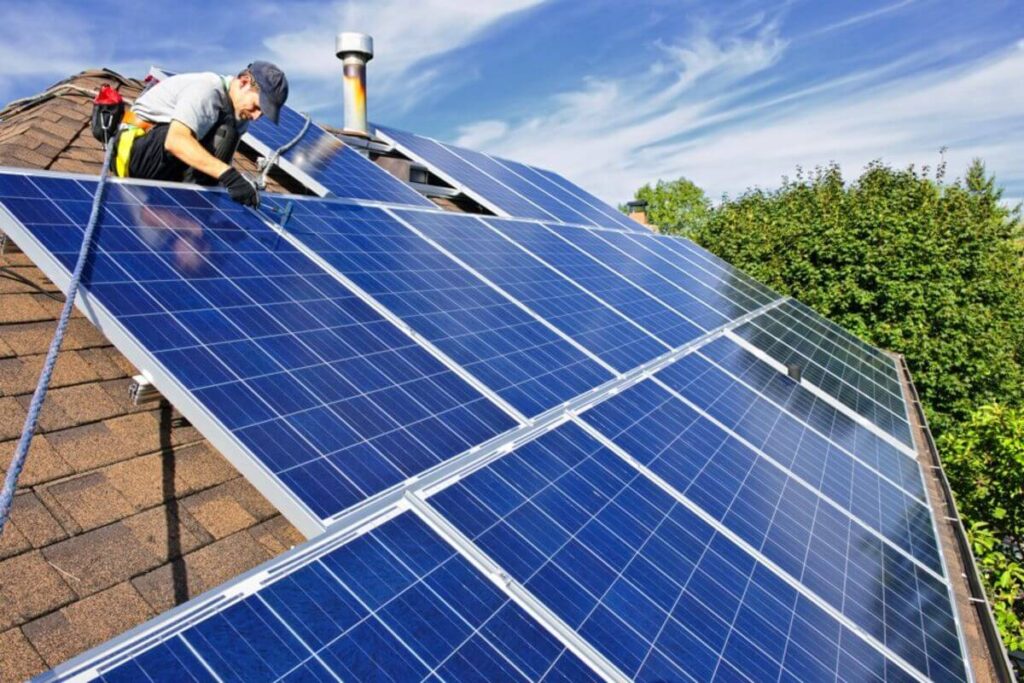
Solar Panel Selection
For solar panel connection and installation, you first need to choose the right size and type of panel. Panel selection depends on the size of the area you will use, the duration of exposure to sunlight and the amount of energy you need.
When you buy a solar panel, it usually comes with a mounting kit. In this kit you will find the frame, cables, box, inverter, charge controller, battery and other accessories needed to fix the panel.
How Much Energy Does a Solar Panel Produce?
- How much energy the solar panel produces,
- Size of the panel,
- Efficiency,
- Duration of exposure to sunlight
- Temperature
depends on many factors. For example, a 300 W solar panel generates about 1.5 kWh of electricity per day if it receives an average of 5 hours of sunlight per day.
This means about 45 kWh of electricity production per month. However, these values vary depending on the actual conditions and where the panel is installed.
Continue reading for more information on solar panel connection and installation. If you have another question about the solar panel, please ask us in the comments and we will include it in our content. 😊
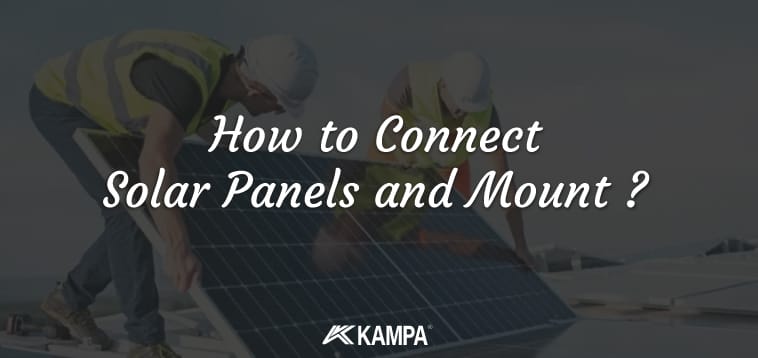
Which Solar Panels are More Efficient?
In general, monocrystalline solar panels tend to be more efficient than polycrystalline and thin film panels. Monocrystalline panels are made from a single crystal of pure silicon and can have an efficiency percentage between 21% and 23%.
Polycrystalline panels are made from smaller pieces of silicon and can have an efficiency percentage between 17% and 18%. Thin film panels are made from various ultra-thin materials and can have an efficiency percentage between 14% and 19%.
When choosing solar panels, it is important to consider efficiency as well as other factors such as price, durability, warranty, temperature coefficient and performance guarantee. In addition, the size of the place where you will install solar panels, the irradiance and your energy needs also influence your choice.
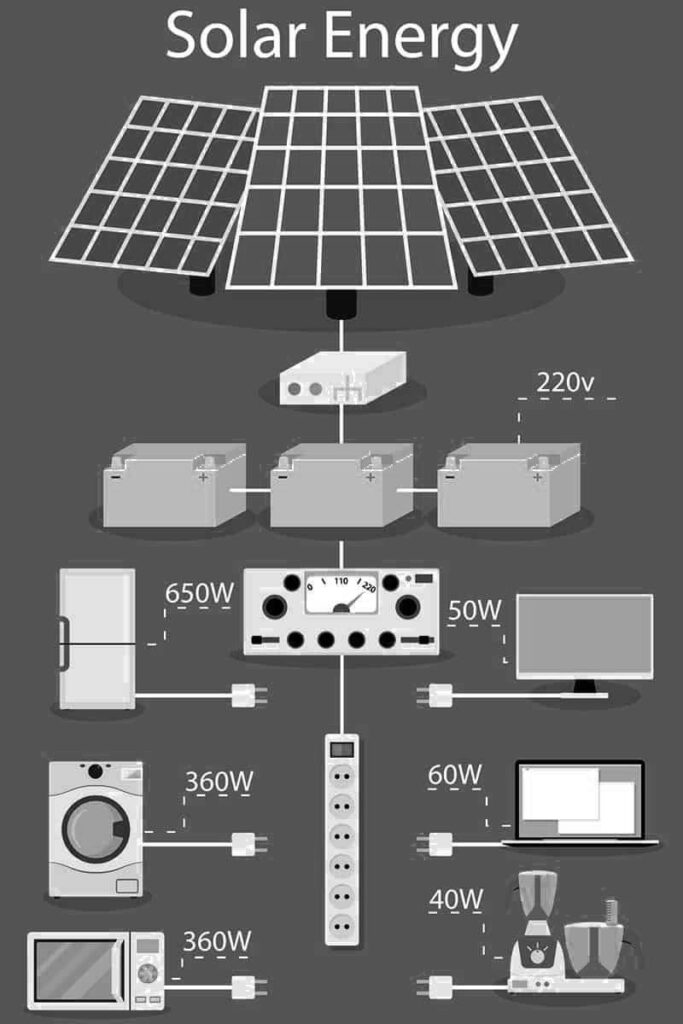
Which Solar Panels Are More Durable?
The durability of solar panels varies depending on the manufacturing process, material quality, state of maintenance and environmental factors. In general, monocrystalline solar panels are more durable than polycrystalline and thin-film panels.
Monocrystalline panels are made from a single crystal of pure silicon and provide higher efficiency, longer life and better temperature coefficient. Polycrystalline panels are made from smaller pieces of silicon and are more affordable, but lag behind monocrystalline panels in efficiency and durability.
Thin film panels are made from a variety of ultra-thin materials, making them lightweight, flexible and portable, but inferior to the other two options in terms of efficiency, durability and lifespan.
Solar Panel Mounting Location and Direction
The most common method for solar panel installation is roof mounting. However, it can also be mounted on the ground or on a pole. For the solar panel to work efficiently, it is recommended to place it facing south and at an angle of 30 degrees.
You can use the frame, clamp and bolt from the mounting kit to secure the panel to the roof or ground. By placing a box behind the panel, you can run cables through it and connect it to the charge controller.
The charge controller directs the DC current generated by the panel to the battery and controls the charge level of the battery. The battery is used to store energy when there is no sunlight.
Solar Panel Battery and Inverter Connection
The DC current from the battery is converted into AC current through the inverter. The inverter provides the alternating current needed to run the electrical appliances in your home. You can use the appropriate cables and connectors to connect the inverter to the battery and the mains.
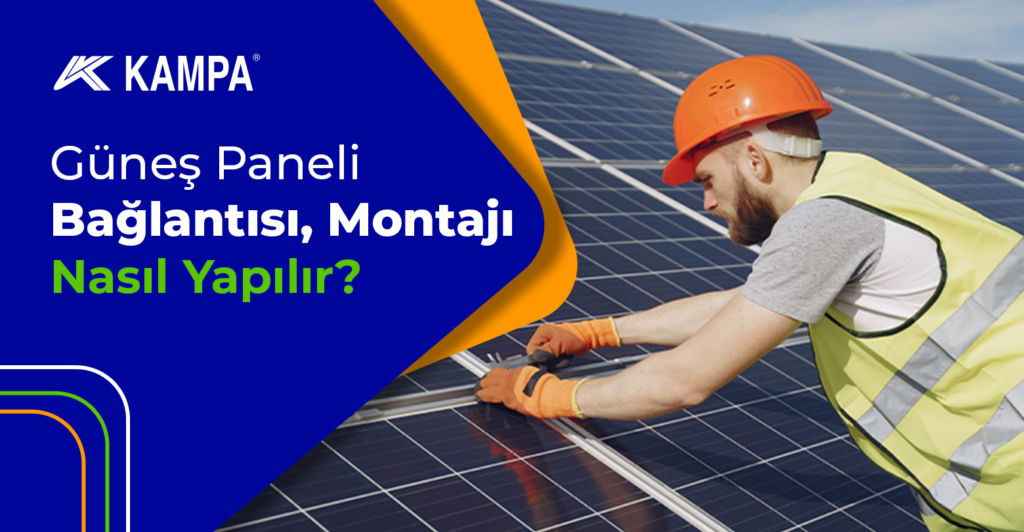
Which Inverter Should I Choose?
There are several factors to consider when choosing an inverter. These are the following:
- Mains connection: You need to decide whether your inverter will be grid-connected or stand-alone. Grid-connected inverters transfer the energy generated by the panel to the grid and will not work when the grid is cut. Standalone inverters charge the batteries and can operate without the grid.
- Number of phases: You need to decide whether your inverter will be single-phase or three-phase. This depends on the number of phases in the electricity meter you are using. Single-phase inverters are used in single-phase systems.
- Three-phase inverters can be used in three-phase systems or in off-grid systems by connecting one inverter to each phase.
- Installation power: You have to decide how much power your inverter will have. This depends on your daily energy consumption and your solar panel capacity.
- You can find your daily energy consumption by looking at the kWh value on your electricity bill or by calculating the power and operating time of the appliances you use.
- You can find your solar panel capacity by multiplying the number of panels and their power. The power of your inverter should be less than or equal to your panel capacity.
- Compatibility with solar panels: You should make sure that your inverter is compatible with your solar panels. The operating voltage and current of your inverter must be compatible with the voltage and current range produced by your panels.
- By connecting your panels in series or parallel, you can access the input voltage of your inverter. You can find the appropriate connection type by examining the datasheet of your inverter.
Types of Connect Solar Panels
It can vary depending on the type of your solar panel system, the amount of solar energy you want to generate and other system components.
Two basic methods for connecting panels together
- serial connect solar panels
- parallel connect solar panels

Connect Solar Panels Serial Connection
Series connection is the connection of solar panels one after the other. In this way, the voltage produced by the panels is summed, but the current remains the same. The system voltage is at least 24 volts and the inverter outputs 800vdc.
The series connection connects the positive terminal of the panel to the negative terminal of the next solar panel. The total output current is the same as the current through a single panel and the output voltage is equal to the sum of the voltages in each panel.
This is valid provided that the connected panels are of the same type and power rating.

Well, let’s look at the situation for solar panel connection with different power, voltage.
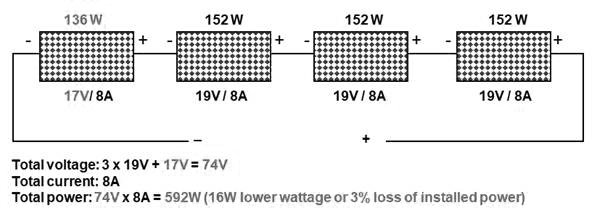
If a panel with lower voltage or current than other panels is used, the output power and voltage will be lower. If the low-voltage solar panel is of a different series or brand, it is affected differently by ambient conditions.
The current generated depends on the ambient and solar cell temperature as well as the solar radiation.
For example, under the same environmental conditions, if a solar panel of different power (136W) has a lower current, 7.5A reduces the performance of the whole system.
The performance of the solar array is as strong as the performance of the weakest element.
Let me examine the situation through a different system. In the following case, the panel with the lowest amperage value determines the amperage value of the system, i.e. 5A. 3 different types of solar panels were used in this system and each has its own voltage, current and power rating.
The total power is reduced by 40% compared to the previous example where the loss of output power is not so significant.
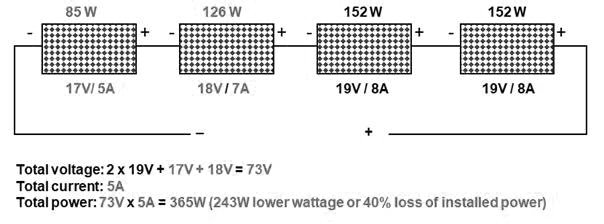
The advantage of series connect solar panels
It provides a suitable input to the inverter to obtain higher voltage and in grid-connected systems.
Disadvantage of series connect solar panels
If one of the panels is overshadowed or fails, it degrades the performance of the entire array.
The series connection is used when you want to achieve a higher voltage.
Connect Solar Panels Parallel Connection
Parallel connection is when solar panels are connected side by side. In this way, the current produced by the panels is summed, but the voltage remains the same.
The same voltage is usually 6V or 12V low voltage for off-grid solar panel systems. All the positive poles of the panels are brought together, as well as the negative poles.
When we connect solar panels in parallel, the total output voltage is the same as the voltage of a single panel and the total output current is the total current. This is true for panels of the same type and power rating.
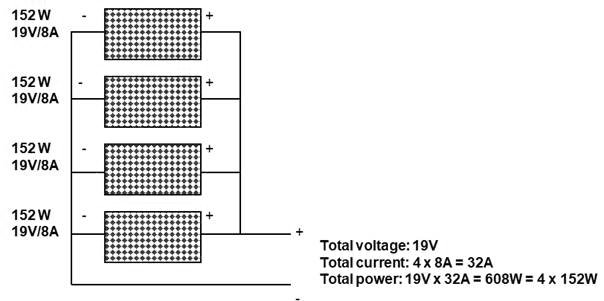
As can be seen, the sum of the power is equal to the output watts, i.e. power, as in the series connection, but the voltage is equal to the voltage of a panel. Also, the sum of the current is equal to the total ampere, unlike the series connection.
Let’s examine panels with different voltage, power and the same current.

It’s worth noting that we experienced more performance loss than expected on systems with different values. Here the system voltage was determined by the one with the lowest voltage on the panels.
Let us examine a system that introduces more diversity.
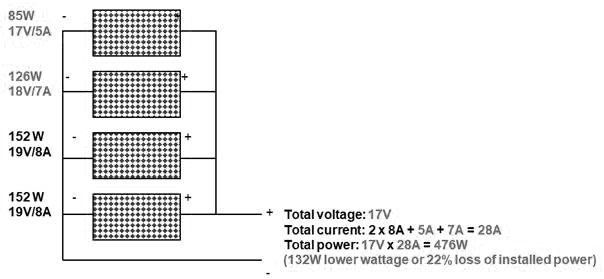
It is quite clear that more losses are emerging.
The advantage of parallel connect solar panels
To achieve higher current and charge batteries faster in off-grid systems.
Disadvantage of parallel connect solar panels
Requires thicker cable and more connectors and current imbalance between panels.
Parallel connection is used when you want to achieve higher current.
Connect Solar Panels Mixed Connection
When you want to achieve both higher voltage and higher current, you can use both series and parallel connection. This way, you can connect one part of the panels in series and the other part in parallel.
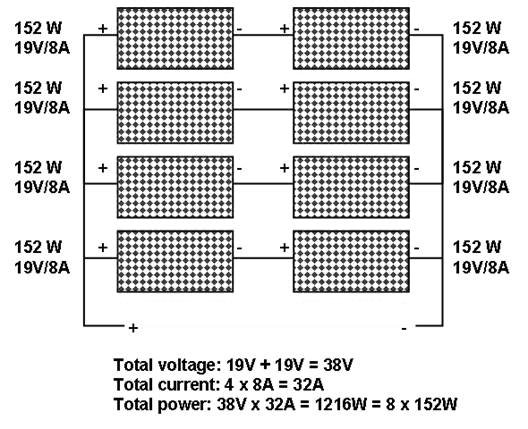
If the electrical parameters (voltage, power, amperage) of the panels are carefully evaluated, there is no problem. We can evaluate the panels supplied from different brands and vendors according to their electrical characteristics and prevent performance degradation.
Series connection increases the voltage while parallel connection increases the current.
Adding panels to the system is an effective and easy way to meet the increasing energy needs in the future. Solar panel connection is applied according to the following criteria:
- Solar panel system type,
- The type of energy to be produced,
- System components such as charge controller, battery and inverter.
It gives you higher power in both connection type modes.
Connect Solar Panels in a Nutshell
- Both series and parallel connections result in more power.
- A panel with a low power rating in both series and parallel connection reduces the overall output power.
- The lower the output power ratio, the lower the generated power loss.
- The power drop is more significant in parallel connected panels.
- If you want to get maximum power from your solar panels, you only need to connect similar panels in parallel.
- Mixing different panels connected in series or parallel always reduces power.
- When implementing a mixed connection, it is more practical to have 2 or more panels for parallel connection.
While the same current values are more important for series connection
, the same voltage values are more important for parallel connection.
In such cases, a charge controller with at least two input supplies or a 2nd charge controller (inverter) must be installed.
The only way to avoid loss of installed power would be to separate the panels into separate circuits and use a charge controller for complex wiring.
Considerations for Solar Panel Connection to Minimize Losses
Only connect panels of different brands but with the same current in series
Connect panels of different brands and with the same voltage in parallel.
The best way to avoid drops is not to connect different panels to the system
Assuming that we are using an MPTT charge controller, it should be noted that solar panels will reduce the effectiveness of this controller. Also, the MPPT solar song controller is a smarter device than the PWM charge controller as it will offer more solar capability by monitoring the optimum power point of the PV panels and the system.
I bought different panels, how do I get the best performance?
Yes you can build the system but at additional cost. You can isolate the power loss by buying surcharge controllers and bringing these differences to the ideal.
Ideal Mix of Parallel Connected Same Voltage Panels
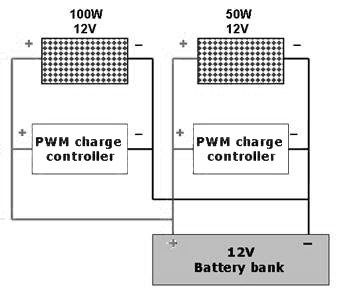
Charge Controlled Solar Panel Connection with Similar Voltage
If you are looking for a low cost solution use a PWM controller. One monocrystalline and one polycrystalline solar panel are connected or 1 poly and 1 mono panel of the same type but of different brands.
We use our scheme not only to isolate the differences that exist between different solar panels, but also to reduce the environmental differences between the same photovoltaic panels. You can use it to balance the system performance in panels that do not see the sun enough and are in the shade.
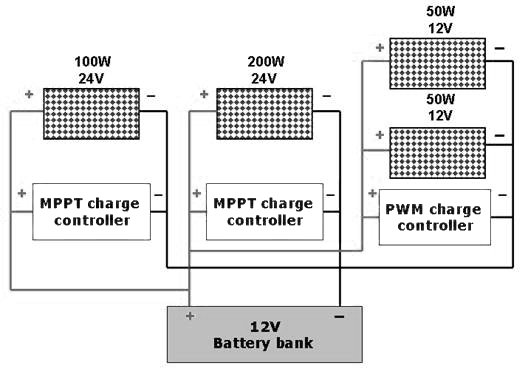
Solar Panel Connection with Charge Regulator with Different Voltage
If you have solar panels with 2 different voltages, let’s say you want to connect 100W/24V and 200W/24V in addition to your existing 12V 50W panels.
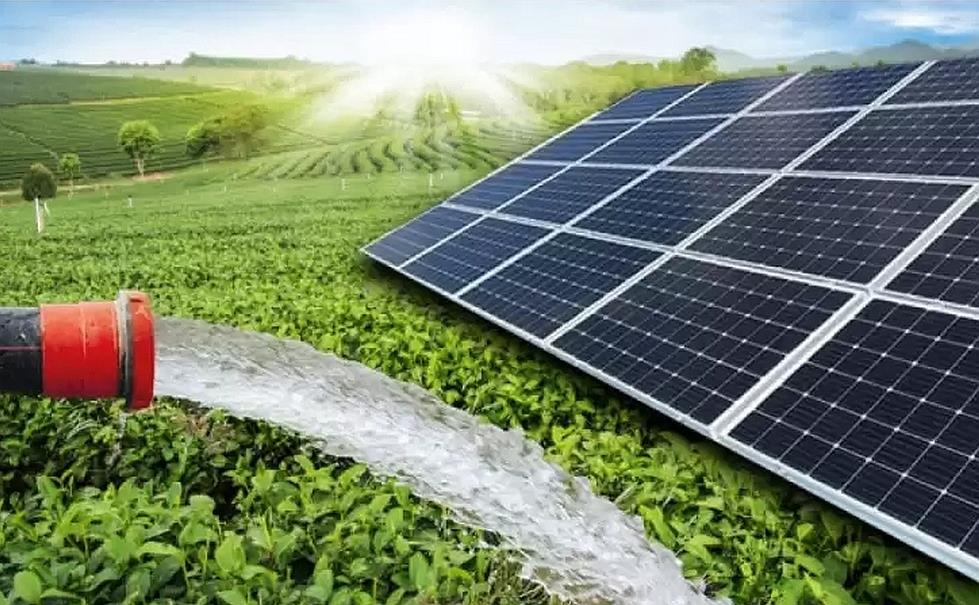
In such a case we need to reduce the 24V solar panel voltage to 12V and for this we use an MPPT charge controller. So why an MPPT charge controller and not a PWM charge controller?
With a high 2 times current, the output power from the MPPT device will be twice that of the PWM controller.
Important Differences between MPPT and PWM Charge Controllers
Charge controllers are used in solar energy systems to charge the batteries with the electricity from the panels. Let’s talk about the important differences of charge control regulators.
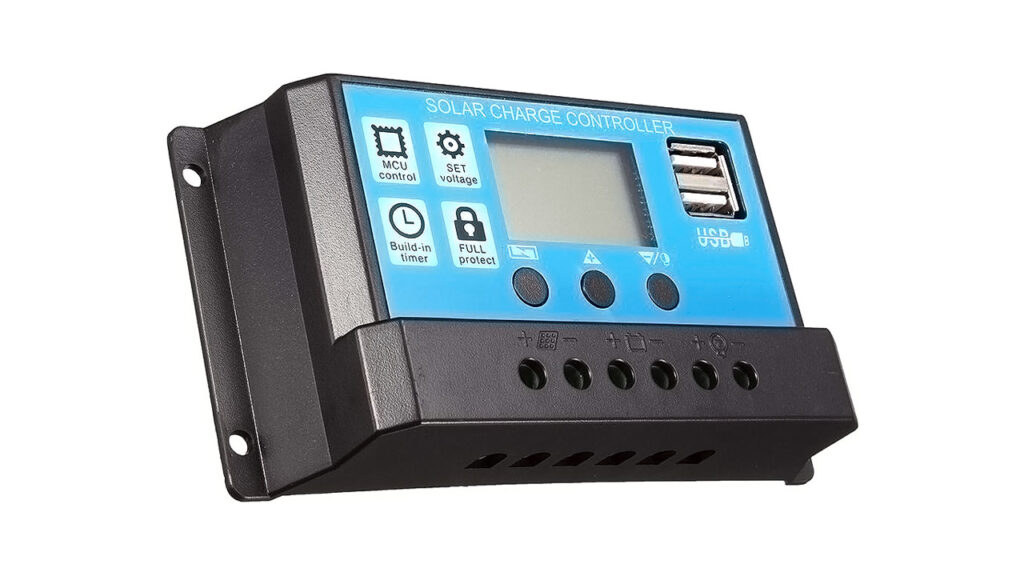
- Mppt charge controllers monitor the power point of the panels and allow them to draw more power and convert it into usable energy for the batteries. Pwm controllers regulate the charging by switching the charging circuit on and off, which causes power loss.
- Mppt controllers work more efficiently than pwm charge controllers . It is 95% for Mppt and about 75% for pwm.
- Mppt controllers are more expensive than pwm ones in terms of price. More price difference occurs according to the functional features included in the controllers.
- Mppt controllers allow connecting solar panels in series, while pwm devices allow connection in parallel. This results in wiring and equipment surcharges.
- Mppt devices are generally suitable for use in large solar panel systems of 400W and above, and those with pwm control system are suitable for 300-400W.
For more, direct all the questions you wonder to us in the comments. Click here for pump models powered by solar energy panels. Click here for our blog post on the use of solar energy.

